How to foster a culture of belonging at work
What if you could bring yourself out of hiding and into the workplace, even the parts of yourself that don’t seem to fit in? To do this, you’d have to feel like you truly belonged at the organization. But what is belonging, exactly?
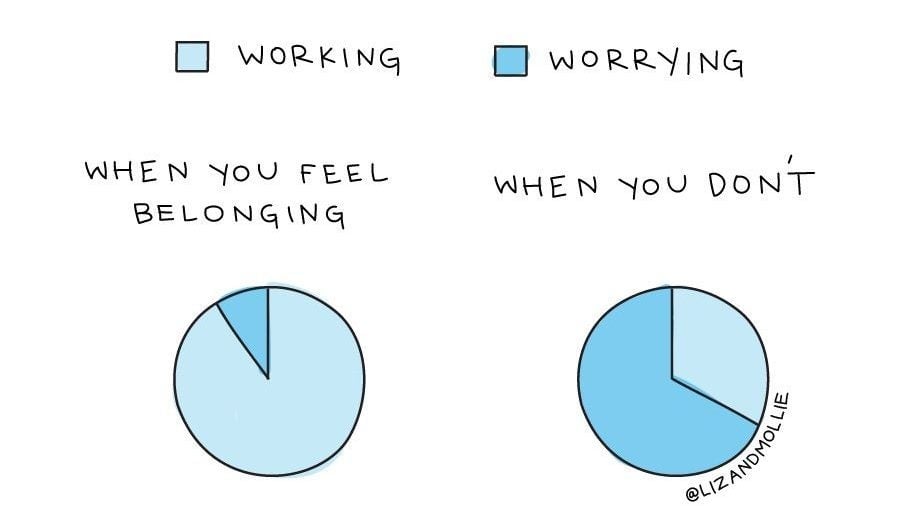

What if you could bring yourself out of hiding and into the workplace, even the parts of yourself that don’t seem to fit in? To do this, you’d have to feel like you truly belonged at the organization. But what is belonging, exactly?
We spent the last three years studying how companies foster a culture of belonging for our new book, No Hard Feelings: The Secret Power of Embracing Emotions at Work. One thing we learned: Transition moments, like an employee’s first day on the job, are particularly anxiety-inducing—which makes them great opportunities to create a sense of belonging.
Think back to how elated you felt the day you received a job offer. But as your start date drew closer, your excitement probably morphed into self-doubt. To counteract first-day-on-the-job nerves, IDEO’s San Francisco office gives new hires an “enterview” (enter + interview). Everyone who interviewed the new hire shares why they’re excited for that individual to join and what necessary skills they bring to the team. These comments are written on a fold-out card that says, “Dear [new employee’s name], we think you’re kind of a big deal, and here’s why.”
At Warby Parker, employees call new hires before their start date to tell them what to expect at orientation and answer any questions. New Google employees whose managers give them a warm welcome on their first day are more productive nine months down the line. Buffer, a social media management company, pairs new hires with an employee who already understands the culture. At the end of the first week, this culture buddy sits down with the new hire to answer questions, give feedback (e.g. how the tone of their emails are coming across), and help them understand that feeling a bit out of place at first is normal.
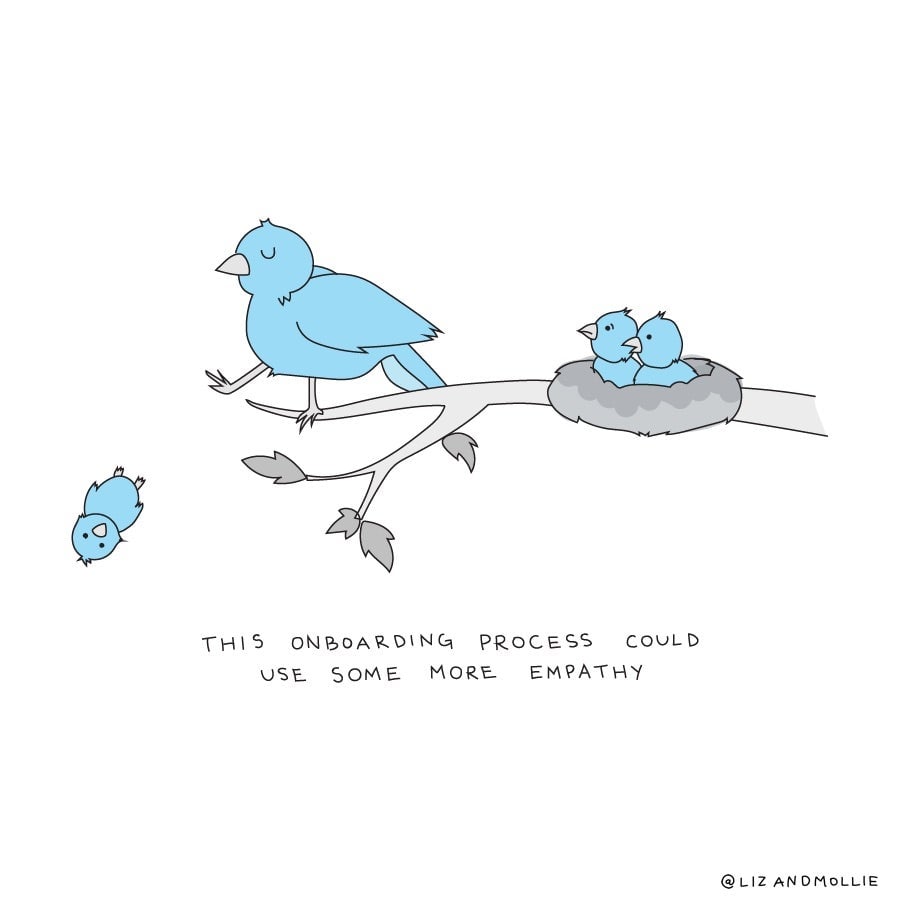
A sense of belonging is not the same as feeling similar to everyone else. Our desire to fit in often compels us to hide who we really are. Belonging is when you feel safe and valued for embracing what makes you different. We feel a sense of belonging when we are confident the team didn’t pick our idea simply because it wasn’t the best choice, not because of anything that is innately wrong with us.
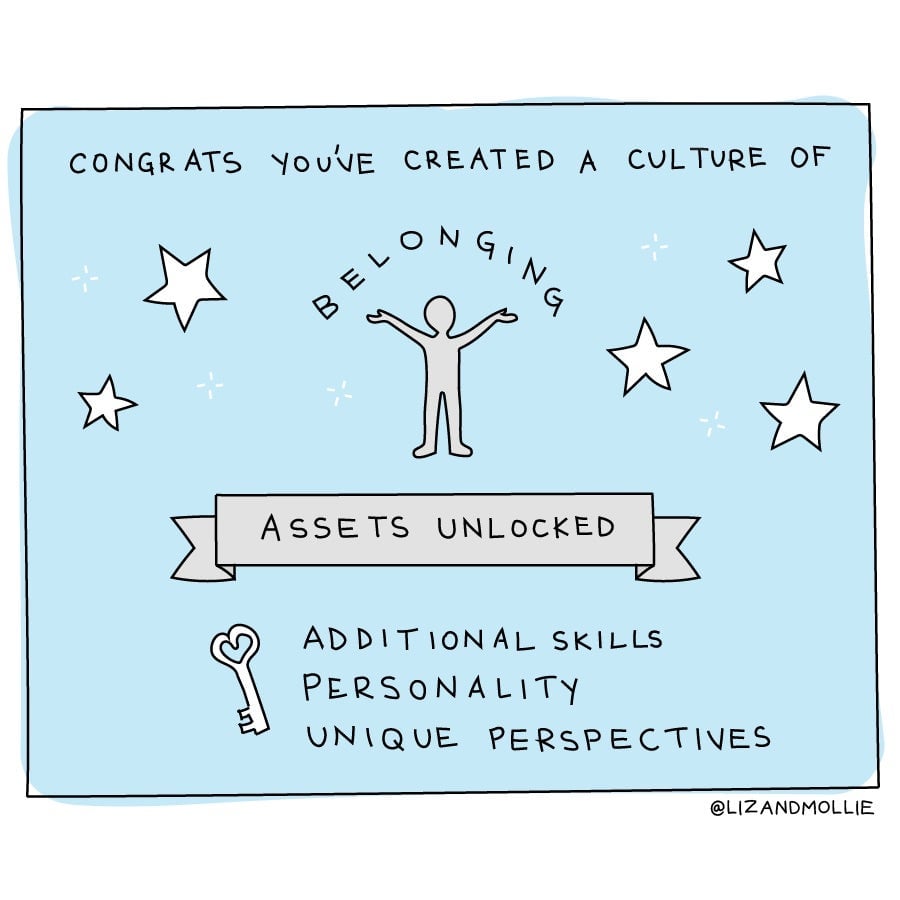
On the other hand, not belonging or feeling a sense of isolation is among the strongest predictors of turnover. A study analyzing emails showed new employees who do not switch from “I” to “we” pronouns during the first six months at their jobs are also more likely to leave.
While everyone experiences periods of self-doubt, members of underrepresented groups are much more likely to feel alienated at work, especially in the first few months of a new job. Individuals from marginalized communities not only ask themselves, “Do I belong?,” but also contend with the question, “Does my group belong?”
Many minority professionals admit feeling pressure to display a workplace identity that both conforms to dominant standards and counters stereotypes about their own group. “Black men often say managing their emotions so others don’t view them as the stereotypical ‘angry black man,’ is just part of their job,” sociologist Adia Harvey Wingfield told us. And black and Latina women frequently report taking pains to speak without an accent or to avoid slang. “I feel like I have to walk a tightrope to avoid reinforcing stereotypes while still being heard,” writes Erica Joy Baker, a senior engineer at Patreon and advocate for diversity and inclusion in tech. “I feel like my presence makes others uncomfortable so I try to make them feel comfortable.”
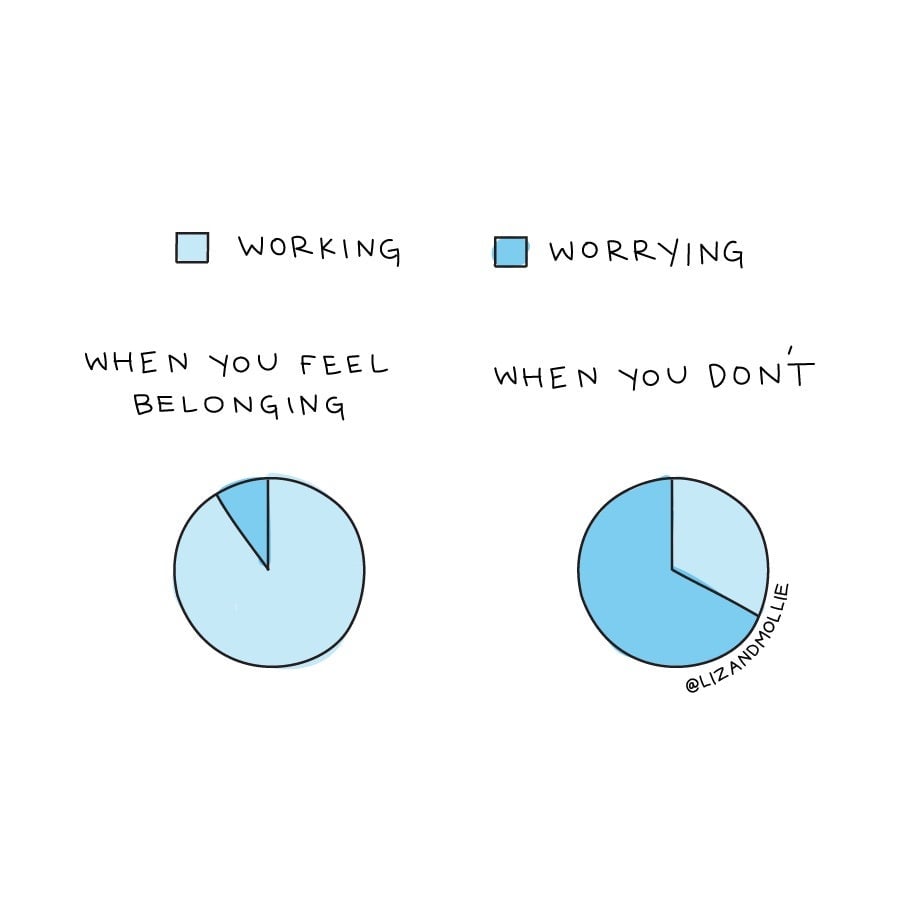
Remember: Feeling like you belong doesn’t mean work will be a walk in the park—it means the normal ups and downs of office life won’t cause you quite so much stress. At Pinterest, managers are encouraged to share their experiences (good and bad) at the company to help their reports understand that some emotional ups and downs are part of the job, and that you can go through difficult periods but still belong.
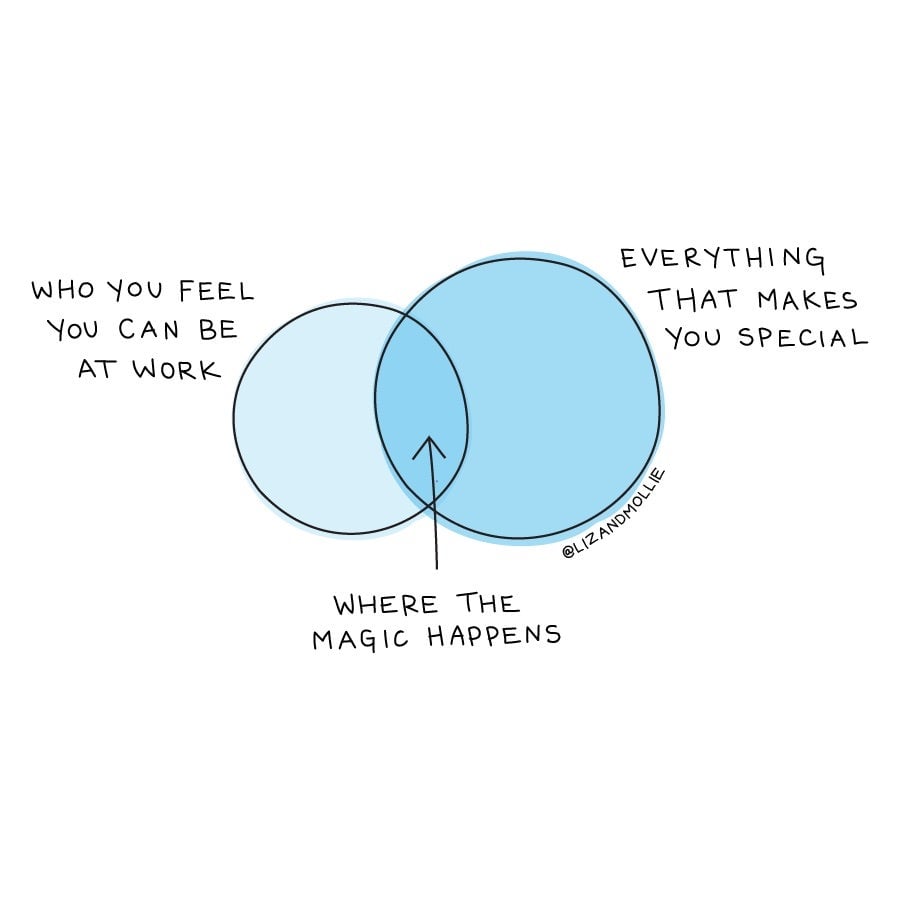
To assess your own sense of belonging within your organization, take our belonging assessment on our website.
Liz Fosslien and Mollie West-Duffy are the authors of the new book No Hard Feelings: The Secret Power of Embracing Emotions at Work. Order the book or subscribe to their monthly newsletter. For more of their cartoons, follow them on Instagram here.